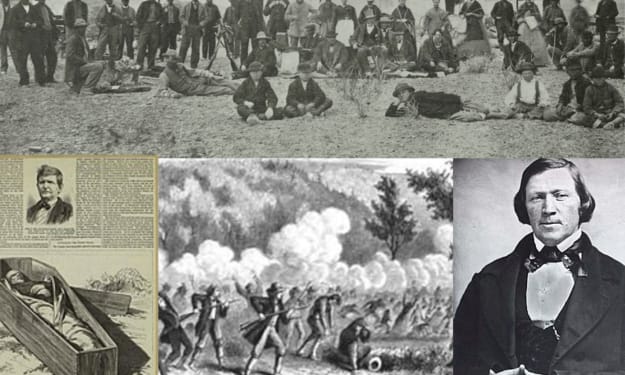The Unlikely Suspect Connected to the Great Fire of London
Over 80% of London was destroyed.

Lucky Hubert was a skilled watchmaker who did not live up to his name. When in 1666, he was caught in the Great Fire of London. As the fire spread, he knew he was to blame for the tragic incident.
Once the fire was extinguished, he felt he had no choice but to go to the authorities and confess his role in the destruction. He was charged and punished for starting the fire.
This may not be the story you were told, and there is a good reason; it is a part of history that was never discussed.
The Start
London had just survived the Great Plague the previous year and was enjoying the freedom. On 2nd September 1666, a fire broke out in the King's bakery in Pudding Lane, which is situated near London Bridge.
Fires were common in those days, and most were quelled very quickly. Sir Thomas Bloodworth was the Lord Mayor of London; his nervous servant told him about the fire when he was woken during the night. His reply was, 'A woman might piss it out!'
However, a combination of a hot summer and no rain meant the wooden houses and buildings had become tinder dry. This, combined with the pitch roofing and thatching, resulted in the fire spreading faster than many anticipated.
City on Fire
The fire quickly spread from the bakery on Pudding Lane. Thomas Fairynor, the baker, always claimed he had extinguished the fire, but by 1 am, his house was a blazing inferno.
The fire travelled quickly down Fish Hill and towards the River Thames. The strong easterly winds helped the fire spread further as it jumped from house to house. When it hit the Thames, it found warehouses stocked with oil and tallow, which quickly ignited.
With the expansion of inhabitants in London, housing had been placed wherever it could. The streets were close together, with roofs almost touching along the narrow winding lanes. The efforts to put the fire out with only buckets of water failed.
Panic started to spread throughout the city. Some tried to flee, taking boats down the River Thames to escape. The panic was increased as sightseers from villages came to view the disaster.
Fire Break
Samuel Pepys documented the fire in his diary, which helped make it successful. At the time, he was a clerk for the Privy Seal, and he hurried to inform King Charles II.
The King ordered that houses within the path of the fire should be pulled down to create a fire break. This was done, but the fire was quicker than them and soon outstripped them.
By 4th September, half of London was on fire. The King took the heroic decision to join the firefighters and worked alongside them, passing buckets of water as the fire raged.
As a result, the decision was made to use gunpowder to blow up houses that lay in the path of the fire. This was quicker and caused a much more substantial fire break. The sound of gunpowder made many question whether a French invasion had started, and panic increased.
By 6th September, the fire was controlled, and the flames had been extinguished. It was time to survey the damage.
Damage
St Paul's Cathedral was one of the most famous buildings caught in the flames. The lead on the roof melted and poured down the street like a river. It was not long until the cathedral collapsed.
Four-fifths of London had been destroyed. Virtually all the civic buildings had been burned to the ground, as well as 13,000 private homes. Amazingly, though, only six people lost their lives.
Despite this, hundreds of thousands of people were left homeless, and many would perish from these conditions, although not directly from the fire. The temporary buildings they erected became a haven for disease. The harsh winter that followed the fire added to the death toll.
The loss of property was estimated at £7 million. The King, to thank the firefighters for their job, gave them a reward of 100 guineas to share.
Although the fire was a disaster, it did have its positives, as it cleansed the streets of disease. From the ashes, a new London emerged.
Aftermath
The ground in London would remain too hot to walk on for several days after extinguishing the fire.
One of the buildings that escaped the fire was the Tower of London. Sir Christopher Wren was tasked with rebuilding St Paul's, which he started in 1675 and completed in 1711. He was also responsible for building fifty-two of the destroyed churches, essentially turning London into the vision we see today.
So what happened to our hapless watchmaker Lucky Hubert? It was later found that he could not have started the fire. Not only had the actual cause of the fire been found, but it was also discovered that Hubert was not even in England when the fire started.
Unfortunately, this was too late, as the justice they served had been swift, and he had already been hanged for confessing to starting one of the greatest fires in English history.
Shortly after the fire, clever businessmen spotted an opportunity to make money by providing house owners with insurance security. They employed men to extinguish any new fires that arose to help with this, forming the first fire brigades in the country.
About the Creator
Sam H Arnold
Writing stories to help, inspire and shock. For all my current writing projects click here - https://linktr.ee/samharnold






Comments
There are no comments for this story
Be the first to respond and start the conversation.